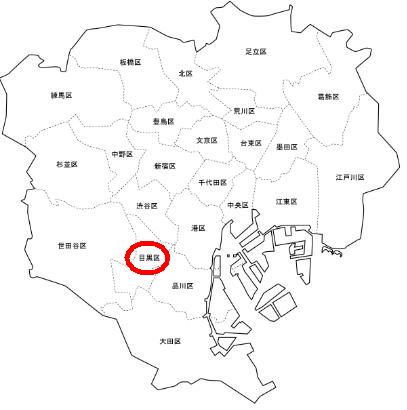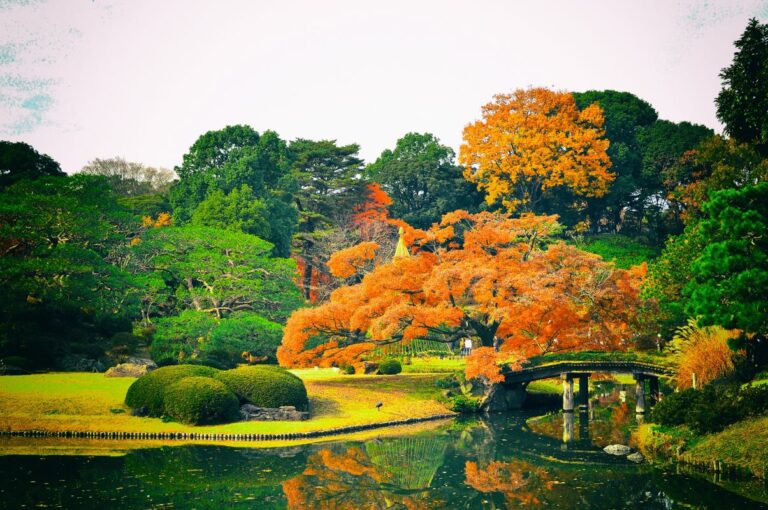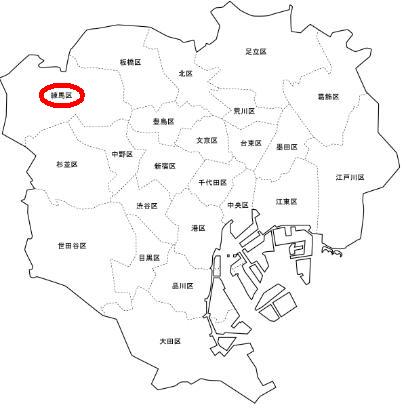
Meguro-ku is located in the southwest of Tokyo’s 23 wards, and for some reason has many African embassies.
Meguro ward is also famous for the sansan (fish) of Meguro. Meguro station is not in Meguro ward, but in Shinagawa ward.
Tako Yakushi Seishoin
3-11-11 Shimo-Meguro, Meguro-ku, Tokyo
Seijoin Temple is located in front of Meguro Fudo-mon Gate, a 5-6 minute walk from Fudo-mae Station on the Tokyu Meguro Line, one of the Meguro Green Walkway’s Fudo Course.
Hibiyu-zuka
3-17 Shimomeguro, Meguro-ku, Tokyo Komurasaki ended her life with her lover, Shirai Gonpachi, in front of his grave. This sad story is famous in Kabuki and other plays as “Goyoshinju,” or “heartache in pursuit of the deceased.” It is said that this mound was built to pray for their happiness in the next life.
Meguro Fudoson (Takiizumi-ji Temple)
3-20-26 Shimo-Meguro, Meguro-ku, Tokyo
Some people believe that the name “Meguro” comes from Meguro Fudo, one of the five colored fudo (red, yellow, white, black and blue).
Himonya Catholic Church
1-26-24 Himonya, Meguro-ku, Tokyo
It is a parish church belonging to the Catholic Archdiocese of Tokyo and was built by the Salesians in 1954 as the Basilica of Santa Maria in Edo, and is familiarly known as the Salesian Church.
Meguro Gajoen
1-8-1 Shimo-Meguro, Meguro-ku, Tokyo
Meguro Gajoen is a complex of a hotel, wedding hall, restaurant, museum, etc., in a unique style of Japanese-Western fusion. It is also famous for being the model of the employee’s dormitory of the bathhouse in Miyazaki’s animation “Spirited Away”.
Otori Shrine
3-1-2 Shimo-Meguro, Meguro-ku, Tokyo
The oldest map of Edo from the Muromachi period (1336-1573) is said to depict this shrine as “Torimyojin” in Choroku’s Map of Edo, and Otori Shrine is known as one of the nine shrines of Edo because only nine shrines were depicted in the Edo Map at that time.
It is also depicted as “Otori Omyojin Shrine” in Edo Meisho Zue (Illustrations of Famous Places in Edo).
Tokyo Metropolitan Museum of Photography
1-13-3 Mita, Meguro-ku, Tokyo
The Tokyo Metropolitan Museum of Photography was established as Japan’s first full-scale cultural institution specializing in photography and film. It is also one of the few museums in the world to include not only photography but also video.
What Does Meguro Mean?
The name “Meguro” is thought to be derived from two different sources. There are several theories as to why Meguro was named Meguro: 1) Meguro, meaning “horse side” in Japanese, is a combination of “me”, meaning “horse”, and “kuro”, meaning “side road”; 2) Meguro, meaning “valley”, or “hollow”, and “kuro”, meaning “ridge”; and 3) Meguro, meaning “black horse” (驪 “kuro”) and “mederu”, meaning “love”, or the color of a horse’s fur.






